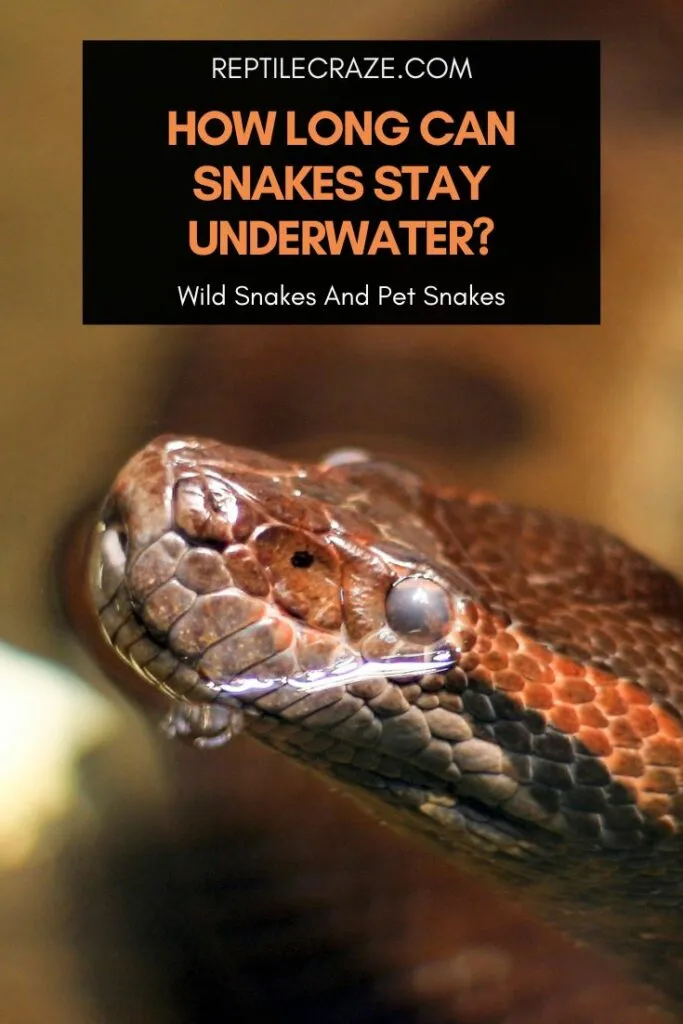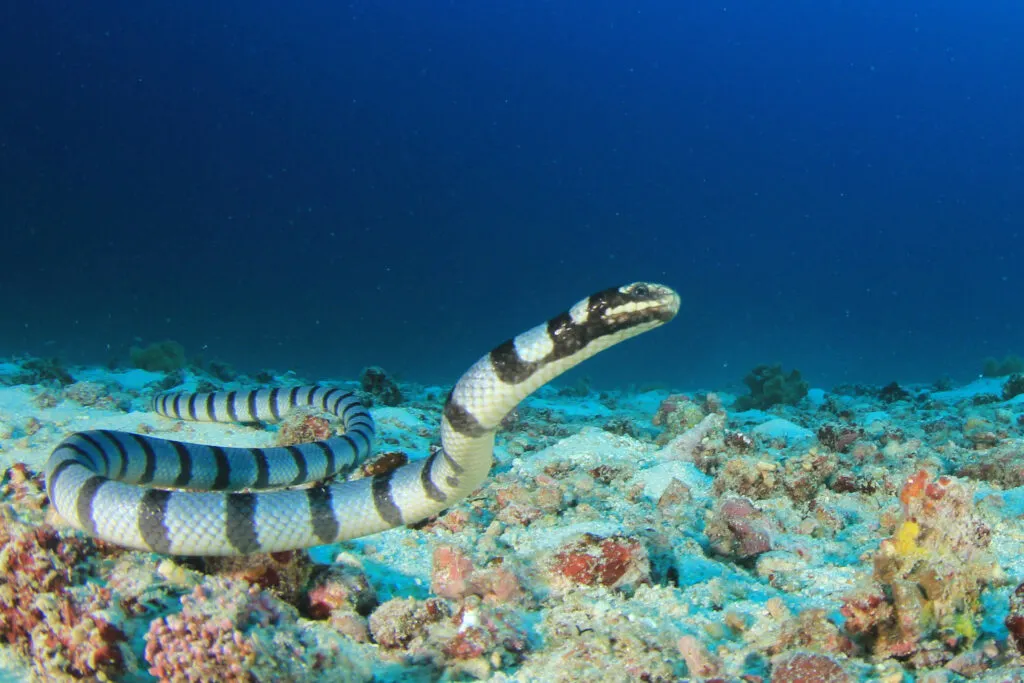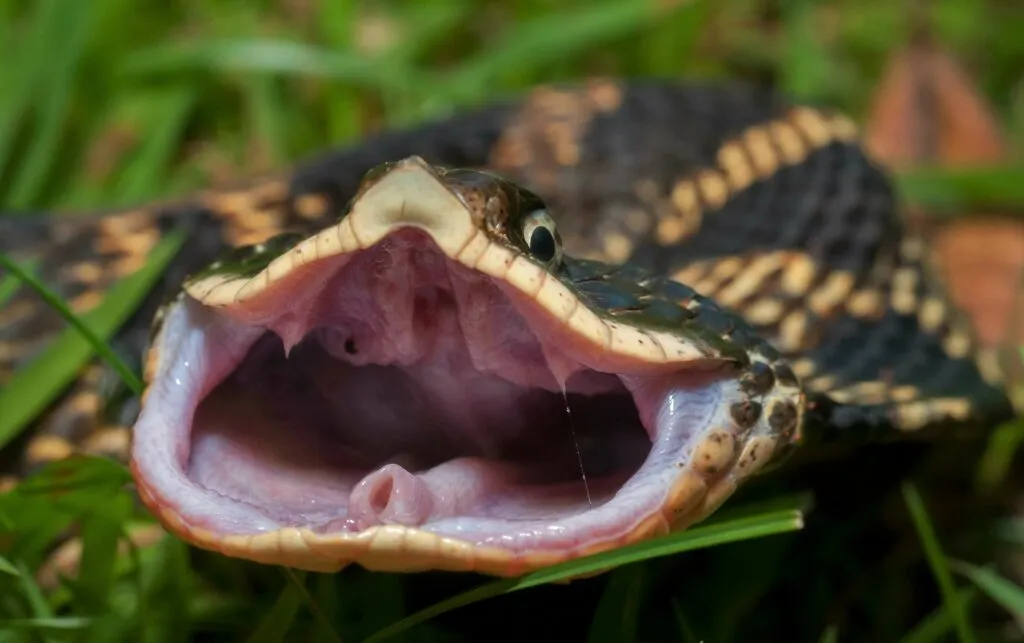
Can snakes hold their breath underwater? Or do snakes breathe underwater? Many people say that snakes are excellent swimmers, is there truth in this? Can you hold a pool party for your pet snakes?
The length of time that a snake can hold its breath varies on different factors. Snakes that are used to marine life can hold their breath for 15-30 minutes. Snakes that mostly stay on land can still hold their breaths, but the length of time is shorter compared to their water-dwelling counterpart.
Can our pet snakes also hold their breath underwater? Is there a possibility that they can drown in their water dishes? We have a lot to cover, so keep on reading!
Table of Contents
How Long Can Snakes Hold Their Breath Underwater?
| Common Snakes | Length of Time Underwater |
| Ball Pythons | 15-20 minutes |
| Garter Snakes | 15-20 minutes |
| Rat Snakes | 7-10 minutes |
| Rosy Boas | 3-7 minutes |
| Bull Snakes | 10-15 minutes |
| Anacondas | 8-10 minutes |
| Water Mocassin Snakes | 13-30 minutes |
| King Cobras | 15-20 minutes |
| Water Snakes | 14 minutes – 8 hours |
| Pit Vipers | 5-10 minutes |
Most studies that tackle how long snakes can breathe underwater are centered on sea snakes. These snakes were able to adapt to aquatic life fully.
Therefore, they spend most of their time in the water or underwater. But just like what we discussed earlier, they simply hold their breaths underwater but will then surface to get more air.
Some sea snakes can hold their breath for 30 minutes, while others can stay underwater for eight hours.
It is good to note that these snakes do cutaneous respiration where their skin is able to absorb a certain amount of oxygen so they can stay longer underwater.
On the other hand, anacondas that spend their time hiding in water do not do cutaneous respiration by default. Therefore, they cannot stay underwater for a long time compared to sea snakes.

In this study, it was found that snakes have the evolutionary adaptability to adjust to aquatic life. Scientists tested aquatic, semi-aquatic, terrestrial, and marine snakes on whether they can adjust to living near bodies of water.
The results are surprising because even though the snakes have different body make-ups as well as hematocrit levels, it was shown that almost all snakes would push their bodies to swim in water or to go underwater, and they all have the ability to hold their breaths even with the varied length of time.
This simply means that all snakes, even captive ones, can hold their breaths underwater. Also, the more they are exposed to marine or aquatic life, the more they will be equipped to hold their breaths underwater.
So a terrestrial snake that used to hold its breath underwater for five minutes can eventually hold it for 15 minutes when it is forced to live near bodies of water. Amazing, right?
How Do Snakes Hold Their Breath Underwater?
It may be difficult to believe that snakes can hold their breaths underwater, especially when they do not have a diaphragm to aid in breathing, more so gills to breathe underwater.
They breathe through their nostrils or glottis. It is a small opening that is behind their tongue. Air will come in this small pocket and will go straight to the windpipe all the way to their lungs.
Most snakes only have one lung, while the second lung does not exist, or is too small, or non-functioning. No need to worry as this occurrence is normal. As they do not have a diaphragm to assist their breathing, they simply contract their muscles to expel air.

Make no mistake, snakes cannot breathe underwater. Even sea snakes cannot breathe underwater. The reason behind this is that snakes do not have gills.
So what snakes do when they need to go underwater is they get ample air from the surface before they submerge into the water.
Once that air runs out, they need to go back to the surface to get more air before again, going underwater.
Tip: If you are wondering if snakes need to be soaked, we highly recommend reading our article on that here!
Can Snakes Drown?
Yes, snakes can drown. However, you can breathe a sigh of relief as snakes do not drown due to their inability to swim. In fact, all snakes are excellent swimmers.
Their bodies were built to swim flawlessly, may it be to evade capture or to hunt their prey. What is interesting about snakes is that their swim styles vary.
Some snakes like to go underwater completely, while other snakes like to float on water with their head sticking out, just like water mocassin snakes.
Snakes drown when there are other factors involved. Such as, a snake was not able to rise to the surface for more oxygen as something is holding it down underwater.
It is also possible that a snake can drown if it suffered an injury while underwater and it cannot go to the surface in time. All of these scenarios are, of course, pertaining to wild snakes.
How about snakes in captivity? Can snakes drown themselves?
Snakes in captivity can drown themselves in the following scenarios:
- Snake is dehydrated and lethargic, which made it soak in the water bowl. Due to lethargy, its head fell below the surface of the water and is unable to raise its head to the surface.
- A snake that is “manually” soaked by its owner. However, the water was too deep for the snake, and its body could not rest on the bottom of the container. This forces the snake to tirelessly swim around until it is time to be taken out.
- A snake was soaked, and the owner forgot to place a hide or a rock for the snake to latch on to.
- When a stressed snake accidentally turns over to pretend that it is dead, but its head is submerged in water.
- If a snake has an undetected respiratory infection that prohibits its lungs and windpipe from working properly, the snake can drown when submerged in water.
Final Thoughts
Snakes are proof that changes in the environment and bodily hindrances do not trump evolutionary adaptability. All snakes can swim, but they differ in their swim styles and how long they can hold their breath underwater.
Nevertheless, when pushed by environmental constraints, snakes still find a way to survive.
Of course, this does not call for a pool party for your pet snake, but it certainly gives you peace of mind that when it comes to challenges with water, snakes are well-equipped to survive on their own.
- Enchi Ball Python: A Unique and Stunning Morph of Python regius - March 27, 2025
- Emerald Tree Monitor: The Enigmatic Green Guardian of the Rainforest - March 26, 2025
- The Egyptian Cobra (Naja haje): A Fascinating Serpent - March 25, 2025
